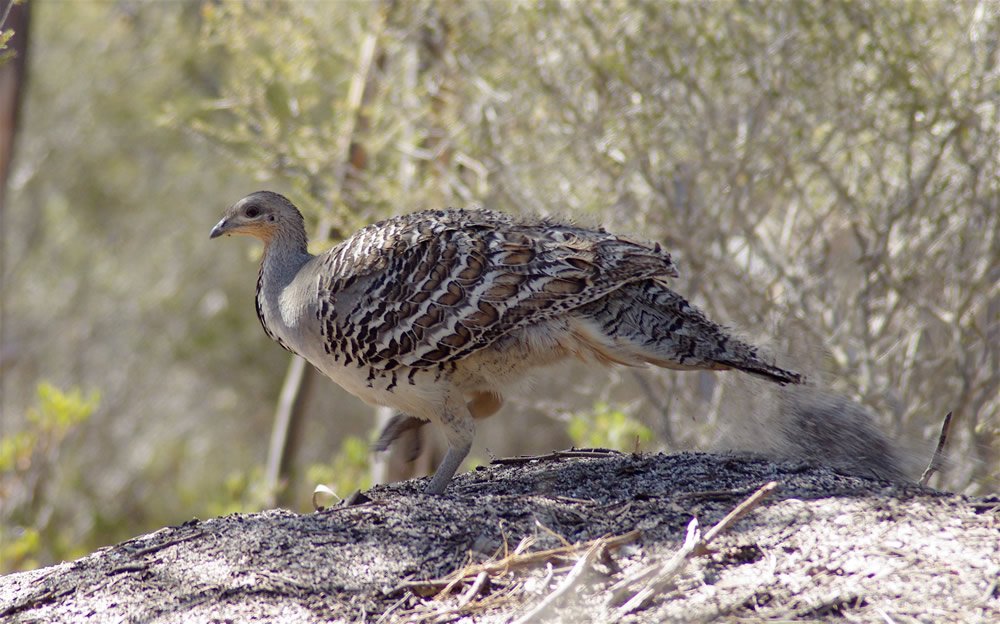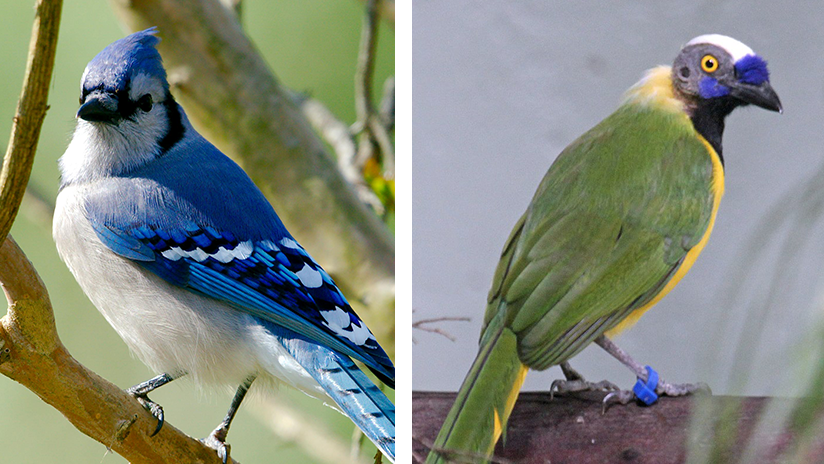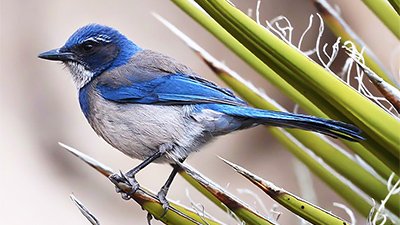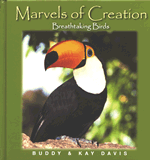
The Incubator Bird: Nest Engineers
Life as an Incubator Bird
What if your life depended on your parents’ ability to discern a narrow range of temperature without using a thermometer? If you were an unhatched Malleefowl chick, belonging to the family of birds known as incubator birds, then your life would absolutely depend on the ability of your parents to incubate their eggs between 29 to 38 degrees Celsius (average 33 degrees Celsius).
Incubator birds don’t warm their eggs by sitting on them. Instead, they build a sort of “greenhouse.” Although the humble size of a chicken, the industrious Malleefowl take on the engineering task of constructing an impressive mound for the eggs, digging about 3 feet deep and 10 feet wide (approximately 90 by 300 cm) with their large feet. Then they fill the depression with all sorts of organic material—sticks, leaves, bark, grass, sand, and soil.
Like a compost heap, this organic material begins to decompose, increasing the mound’s temperature. Using their bills and tongues, Malleefowl monitor the temperature of the mound. When the temperature of the mound reaches approximately 30 degrees Celsius (86 degrees Fahrenheit), the hen lays an egg. Every week or two for about six months, she comes to lay another egg. Altogether, she lays about 15 to 30 eggs. Compared to her body size, the eggs are quite large—around 10 percent of her body weight. By the end of her laying season, she may lay 250 percent of her body weight.
The male situates each egg in the right place inside the mound. He continually checks the temperature of the mound, making changes on the mound to keep the temperature constant and the humidity close to 99.5 percent. If the temperature is too warm, the male exposes the eggs to the air and may layer sand on the mound as a screen from the sun. If the temperature is too cold, the male exposes the eggs to the sun during the day and then covers them inside the mound during the night.
Thousands of pores in the egg allow the chick to breathe. A unique feature of these pores is that they are shaped like cones with the narrow part on the inside.1 The growing chick soon lacks air from these narrow holes. As it scrapes against the shell, the holes of the cone-shaped pores increase in size, providing more air.
The chick hatches out of the egg using its strong claws. But it isn’t free yet. For as long as 15 hours, the chick lies on its back and digs its way out of the mound. Unlike many other birds, incubator chicks hatch fully feathered and capable of finding their own food from day one—they receive no care from their parents. The Malleefowl chicks can fly within 24 hours. With no training from the parents, incubator chicks grow up to build and monitor mounds of their own.

A Malleefowl at Ongerup, Ongerup, Western Australia, Australia. Image by Magnus Manske, via Wikimedia Commons.
Snapshot
- Malleefowl belong to the family Megapodiidae. The name megapode means “big feet.” They use their oversized feet to build mounds. Incubator birds live in Australia and nearby islands. The range of species in the megapode family reaches across the Australasian region, including the Philippines and Tinian Island in the Northern Marianas.2
- Early European explorers to Australia thought the megapode mounds were Aboriginal burial mounds. Some megapodes build mounds 10 feet high and 50 feet across.
- With the shape of a small turkey, the Malleefowl has a mottled array of gray, tan, brown, white, and black feathers that camouflages it from predators. The Australian brush-turkey, a more common species of megapode, is mostly black with a red head.
- In parts of Australia, Malleefowl are considered endangered.3 The threats include land clearing, predators like foxes, climate variation, and increased wildfires.
- While most megapodes live in wooded places, the Malleefowl can live in arid shrublands.4
- The incubator bird is not a picky eater. As a browser, it finds plants, berries, seeds, and insects.
- Some species of megapode hens, only three to four pounds themselves, lay eggs that each weigh half a pound.
Divine Design
The idea of evolution proposes that life is the result of mindless chance. How could mindless chance lead to a creature as complex as the incubator bird? The Malleefowl must somehow know how to build and tweak a mound to keep the temperature within a specific range. These unique designs must have been in place all at once to prevent extinction.
Both evolution and creation are historical sciences rather than operational science because they interpret events of the past based on philosophical assumptions. Evolutionists assume that the world began with a big bang and that life evolved from nonlife to primitive life forms to higher life forms. Creationists’ starting assumption is that the Bible is God’s inerrant Word that should be trusted from the beginning verse: “In the beginning God created the heavens and the earth” (Genesis 1:1).
Creationists are not baffled by amazing creatures like the incubator bird, because the Bible says God made everything “very good” (Genesis 1:31). When creating birds on Day Five of the Creation Week, the all-wise Designer made them fully formed and functioning according to their kinds with genetic potential for variation to fill the earth (Genesis 1:20–23). No wonder we enjoy such a variety of birds, from diving penguins to flittering hummingbirds to mound-building incubator birds.
O Lord, how manifold are your works!
In wisdom have you made them all;
the earth is full of your creatures . . . .
May the glory of the Lord endure forever;
may the Lord rejoice in his works. (Psalm 104:24, 31)
Further Reading
Creation Corner
Remember that everything was cursed because of man's sin (think specifically of the ground and serpent mentioned in Genesis 3). Death then intruded upon God’s perfect creation, so animals, people, and plants have had to fight for survival ever since. Because of the Curse, traits developed that would have been unnecessary before Adam sinned, like venom and stingers for attack and defense. Keep in mind, though, that not all deadly looking features necessarily had to develop! Fruit bats are a great example of how mean-looking teeth can work just as well for ripping apart vegetation, not flesh! For more about how and why deadly structures are now a part of our world, see “”
Of course some animals are impressive for their beauty and design, too. Seeing things through the lens of Scripture, we see an all-wise and intelligent God who spoke animals into existence in a perfect world that was soon marred by sin and death. We can praise the Creator for a remnant of that incredible beauty and design still. And God has also thus provided us with examples of his intelligence and provision that we can put to good use in biomimicry. Join us in giving glory to God for his loving care for us and his creation, despite the curse.
– Editor
Footnotes
- Incredible Creatures That Defy Evolution I, directed by Steve Greisen (Monument, CO: Reel Productions, 2006), DVD.
- Josep del Hoyo, Andrew Elliott, and Jordi Sargatal, eds., New World Vultures to Guineafowl (volume 2 in Handbook of the Birds of the World, Barcelona: Lynx Edicions, 2004), 288–304.
- “Australian Threatened Species: Malleefowl Leipoa ocellata,” Department of the Environment and Energy (Australia), 2006, http://www.environment.gov.au/system/files/resources/eed39fb9-0a63-4aac-bc84-785330d8b9fb/files/tsd06malleefowl.pdf.
- Ibid.
Recommended Resources

Answers in Genesis is an apologetics ministry, dedicated to helping Christians defend their faith and proclaim the good news of Jesus Christ.
- Customer Service 800.778.3390
- Available Monday–Friday | 9 AM–5 PM ET
- © 2026 Answers in Genesis




